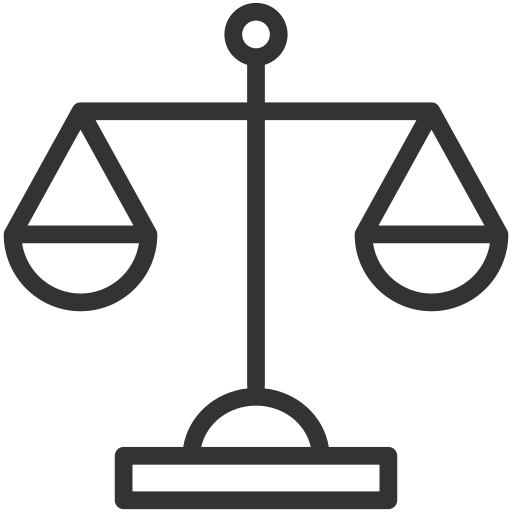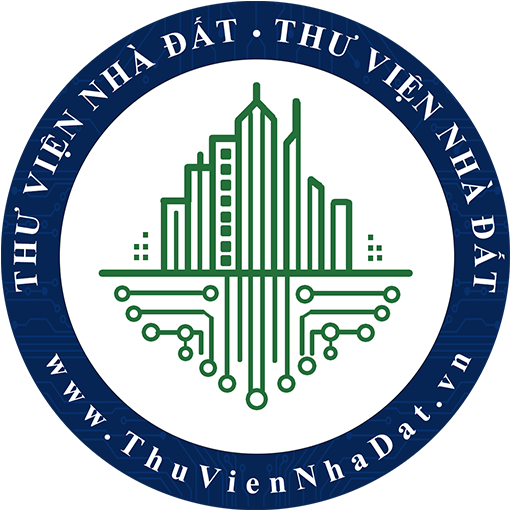|
THE MINISTRY OF
HEALTH |
SOCIALIST
REPUBLIC OF VIETNAM |
|
No. 5349/QD-BYT |
Hanoi, November 12, 2019 |
DECISION
APPROVING PLAN FOR DEPLOYMENT OF ELECTRONIC HEALTH RECORDS
THE MINISTER OF HEALTH
Pursuant to the Resolution No. 20-NQ/TW dated October 25, 2017 by the 12th Central Steering Committee on enhancement of citizens’ health protection, care and improvement in new situation;
Pursuant to the Government’s Decree No. 75/2017/ND-CP dated June 20, 2017 on functions, tasks, powers and organizational structure of the Ministry of Health;
Pursuant to the Decision No. 6111/QD-BYT dated December 29, 2017 by the Minister of Health approving the scheme for application of information technology in commune-level medical centers for the 2018 - 2020 period;
Pursuant to the Decision No. 4888/QD-BYT dated October 18, 2019 by the Minister of Health introducing the scheme for application and development of smart healthcare information technology for the 2019 - 2025 period;
At the request of the Head of the Electronic Health Administration,
HEREBY DECIDES:
Article 1. Promulgated together with this Decision is the plan for deployment of electronic health records (hereinafter referred to as “the Plan”).
Article 2. This Decision takes effect from the date on which it is signed.
Article 3. Head of Office of the Ministry of Health, Head of the Electronic Health Administration, Head of the Department of Planning and Finance, Chief Inspector of the Ministry of Health, heads of affiliates of the Ministry of Health, heads of Departments of Health, heads of health units of other Ministries and regulatory bodies and heads of relevant units shall implement this Decision./.
|
|
THE MINISTER OF
HEALTH |
PLAN
FOR DEPLOYMENT OF
ELECTRONIC HEALTH RECORDS
(Enclosed with the Decision No. 5349/QD-BYT dated November 12, 2019)
I. Necessity
A health record is a medical document recording the whole healthcare process, from birth to death, that a person experiences and made using the form specified by the Ministry of Health.
An electronic health record (“EHR”) is the computerized version of a health record that is formulated, displayed, updated, retained and shared via electronic means.
To the people, EHRs provide them with knowledge and the ability to continuously manage their health information throughout their lifetime. Thus, people can proactively prevent diseases and take care of their own health. When visiting a doctor, a patient can quickly, fully and accurately present their medical documents and medical history through their health record, which facilitates diagnosis and treatment.
To doctors, with their ability to fully provide information on diseases, medical history and health risks, EHRs can be combined with physical examination to assist doctors in giving opinions on their patient’s health more comprehensively, making diagnoses more promptly and accurately, detecting diseases earlier, giving treatment when the disease is in an early stage, which brings higher chance of success, and reducing the medical costs of each patient. Moreover, when information about a patient’s health remains consistent across all levels, diagnosis and cooperation in treatment are facilitated. EHRs enable doctors to take care of people’s health in a continuous and comprehensive manner according to principles of family medicine.
To management operations, deployment of EHRs assists the healthcare sector with promptly acquiring full and accurate health information from the people, comprising a major health database of the sector. Such database serves as the basis for data compilation and analysis, which enables the sector to promptly produce guidelines for epidemic surveillance and control, obtain forecasts and formulate policies for health protection, care and improvement.
To health insurance, clear and transparent information on medical services received by patients facilitates management of medical service costs, which limits drug and testing abuse.
Therefore, development of the EHR system is immensely beneficial to the people and the healthcare sector; facilitates doctor’s operation; is a factor of practical significance to the deployment of electronic healthcare, gradual application and development of smart healthcare and active participation in the fourth industrial revolution; and contributes to the modernization of the healthcare sector, meeting the demands of health protection, care and improvement of the people in new situation as specified in the Resolution No. 20-NQ/TW.
II. Legal grounds
Resolution No. 20-NQ/TW dated October 25, 2017 by the 12th Central Steering Committee on enhancement of citizens’ health protection, care and improvement in new situation;
Decision No. 2348/QD-TTg dated December 05, 2016 by the Prime Minister approving the scheme for construction and development of grassroots healthcare networks in new situation;
Decision No. 6111/QD-BYT dated December 29, 2017 by the Minister of Health approving the scheme for application of information technology in commune-level medical centers for the 2018 - 2020 period;
Decision No. 4888/QD-BYT dated October 18, 2019 by the Minister of Health introducing the scheme for application and development of smart healthcare information technology for the 2019 - 2025 period;
III. Objectives
1. General objectives
Deploy EHRs for all people, ensure that each person possesses an EHR and gradually form a database for people’s health in the national healthcare data center.
2. Specific objectives
a) Develop and complete the EHR system, ensure management of all of the information specified in the Decision No. 831/QD-BYT dated March 11, 2017 by the Minister of Health promulgating specimens of individual health records for primary healthcare, provide interfaces with the Ministry of Health, Departments of Health, healthcare facilities, health professionals and the people.
b) Directly collect and input health information from the people or from healthcare facilities into EHRs based on applicable standards of the healthcare sector, including HL7 international standards and standards for output data used in management, assessment and payment for medical services according to the Decision No. 4210/QD-BYT dated September 20, 2017 by the Minister of Health.
c) By 2020: Provinces and central-affiliated cities will have deployed EHRs, at least 80% of people will have possessed EHRs. The database for people’s health will have been formed in Departments of Health and the national healthcare data center.
d) By 2025: 95% of people nationwide will have possessed EHRs, had their health information regularly updated and have been connected will all healthcare facilities across the country.
IV. Contents
1. Development and completion of EHR software
A piece of EHR software must meet the following requirements for design and functions:
a) Software design
The design of a piece of EHR software must satisfy the following requirements:
- It must record all contents and information required in health records as specified in regulations of the Ministry of Health (Decision No. 831/QD-BYT dated March 11, 2017 by the Minister of Health promulgating individual health records for primary healthcare);
- The Decision No. 4210/QD-BYT dated September 20, 2017 by the Minister of Health providing for output data standards and formats used in management, assessment and payment for medical services;
- The Circular No. 48/2017/TT-BYT dated December 28, 2017 by the Minister of Health prescribing transfer of electronic data used in management and payment of covered health care costs;
- Compatibility with HL7 standards;
- Connectivity between EHRs and the healthcare identification number system ( “ID system”) and relevant health information systems.
b) Software function groups:
- Medical service provision;
- Administrative management;
- Information infrastructure management.
c) Compliance with regulations on personal information protection as prescribed in section 2, Chapter II of the Law on Cyber information Security.
2. Development and deployment of the ID system
a) Develop the system for management of healthcare identification numbers according to the Decision No. 4376/QD-BYT dated September 24, 2019 by the Minister of Health on assignment, use and management of healthcare identification numbers.
b) Ensure each EHR is assigned a healthcare identification number.
c) Deadline: 2020.
3. Information and data management
a) Information and data acquired during the deployment of EHRs are possessions of state management authorities (the Ministry of Health and Departments of Health).
b) Services providers or software developers shall fully transfer information, data and code sources of EHR software and necessary tools upon contract completion to ensure that the Ministry of Health or Departments of Health is/are able to employ EHRs even in case of change of service providers.
4. Deployment of the EHR system
a) Provinces and central-affiliated cities shall proactively deploy EHRs in their localities. Ensure that by 2020 at least 80% of people in provinces and central-affiliated cities will have possessed EHRs.
b) EHRs shall be deployed in the following order:
- Development of the EHR software;
- Installation of the EHR software in healthcare facilities;
- Training in use of the EHR software for health officials;
- Forming EHRs for people in provinces and central-affiliated cities based on health information from healthcare facilities or from the people themselves;
- Update of information in the EHR software in healthcare facilities;
- Use of health information in the EHR software;
- Maintenance of the EHR system.
c) Timeline: 2019-2025.
5. Formulation of specialized documents and guiding documents
- Formulate standards for connection between EHRs and the ID system and relevant healthcare information systems.
- Develop regulations on use, management and operation, ensure safety of information in the EHR system.
- Promulgate regulations on forming, update and use of EHRs.
- Formulate financial mechanisms to maintain and operate the EHR system.
Deadline: 2020.
V. FUNDING
1. State funding allocated to current expenses of units and localities.
2. Funding from relevant programs and plans.
3. Funds for development of public service provision of units.
4. Other legal funding sources.
VI. IMPLEMENTATION
1. The Electronic Health Administration shall:
a) Develop, complete and maintain the EHR system.
b) Develop the system for management of healthcare identification numbers.
c) Formulate specialized documents and guiding documents.
d) Provide guidance for and assist provinces, central-affiliated cities and relevant units in EHR deployment.
dd) Assist with data filter and connecting data of healthcare information software with the EHR system.
e) Monitor, inspect and evaluate EHR deployment and efficiency thereof throughout the country.
g) Compile, analyze and input health data of people in each locality and unit into the health record system to form the national health database.
2. The Medical Service Administration shall:
a) Take charge in performing specialized tasks concerning health records, review and update contents of health records.
b) Cooperate with the Electronic Health Administration in ensuring consistent and stable performance of the health record system after its deployment.
3. The Department of Planning and Finance shall:
a) Advise the Minister of Health on allocation of funding for development, completion and maintenance of the EHR system, document formulation and training for central-level lecturers.
b) Cooperate with the Electronic Health Administration in formulating financial mechanisms to maintain and operate the EHR system.
4. The Office of the Ministry of Health, Ministry Inspectorate and affiliates of the Ministry of Health shall:
Cooperate with the Electronic Health Administration in deploying EHRs throughout the country, and reviewing and evaluating such deployment as appropriate to the functions and tasks assigned by the Minister.
5. Hospitals affiliated to the Ministry of Health shall:
a) Assign officials to be in charge of EHR deployment in their premises.
b) Provide training for officials involved in medical service provision.
6. Departments of Health shall:
a) Based on the Plan and the realities, Departments of Health shall formulate plans for provincial EHR deployment, submit such plans to Chairpersons of People’s Committees of provinces and central-affiliated cities for approval (or approve as authorized by People’s Committees of provinces and central-affiliated cities) and organize EHR deployment in their provinces, ensuring completion by 2020.
b) Form groups to support provincial EHR deployment.
c) Review and evaluate results of EHR deployment in their provinces and report to the Ministry of Health.
d) If Departments of Health employ pieces of health record software of different providers, such pieces must meet the requirements specified in Point 1, section IV of this Plan; concurrently, EHR data of their provinces must be synchronized with the national healthcare data center on a weekly basis for the purposes of nationwide health data connection and sharing.
dd) Synchronize EHR data of their provinces with the national healthcare data center via http://www.hososuckhoe.gov.vn or http://www.myehr.vn.
|
|
THE MINISTER OF
HEALTH |
------------------------------------------------------------------------------------------------------
This translation is made by THƯ VIỆN PHÁP LUẬT, Ho Chi Minh City, Vietnam and
for reference purposes only. Its copyright is owned by THƯ VIỆN PHÁP LUẬT
and protected under Clause 2, Article 14 of the Law on Intellectual Property.Your comments are always welcomed



















